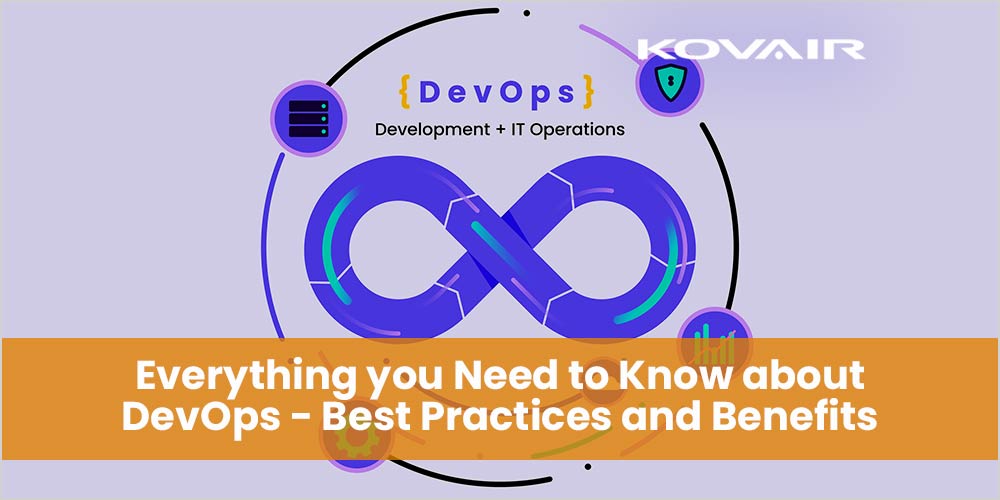
That one aim every organization dreams of is high-profit margins and enhanced team productivity. While the fact is, every business indeed dreams about it, very few actively understand the measures it requires and implements them.
DevOps doesn’t fail to seize the stage whenever we talk about productivity. This recent IT buzzword is all over the internet.
But how well do you understand DevOps, the best practices which make it, and the exemplary benefits of DevOps culture that ensure your team’s productivity to ensure high business success? In this article, we’ll break down all the key components in a very comprehensive yet concise manner-
What is DevOps?
If you want the best approach to comprehend DevOps, understand it as a business driver. DevOps is a development method for enterprise applications by creating an agile relationship between the development and operations teams. Both teams are essential for the success of a company. It helps boost the speed and quality of software deployments with a new outlook on business processes.
We’ll further understand in depth why do we need it-
Why do we need DevOps?
While there’s a popular notion of how DevOps is just a trend. But on a side note, trends come and go as tides, and DevOps is here to stay. The reasons why DevOps is mainly in demand and beneficial to businesses in their overall functioning are endless.
Unlike the traditional waterfall approach, which lacks speed and doesn’t have any cross-connection between the teams, DevOps works to break down obstacles to communication between development and IT operations teams. Companies can execute products with higher efficiency with shorter developmental cycles with DevOps in action.
DevOps encourages faster, better and safer delivery of products and the business value associated with them for the organization’s end customers.
[the_ad id=”2867″]
Breaking down DevOps best practices
1. Centralized unit for DevOps
DevOps work with tools like Splunk and Jenkins, which should have a centralized unit to create and implement these tools. The same centralized team should take the charge of Agile development across the organization. They also must take the responsibility of sharing the most valuable tools with the entire company.
2. Shift left with CI/CD
With a shift left, it means the development teams bring Testing into their software development lifecycle (SDLC) early. The earlier you find the bugs and defects in the software, the better it is to find and resolve them to ensure the high quality of the product. Shift left in CI/CD also means you’re focussing more on preventing problems rather than keeping them for later. This makes the test cycle quicker and aids the quality code maintenance.
3. Continuous Development and Continuous Testing
The development process covers and planning and coding phases of the DevOps lifecycle. On the other hand, continuous testing is the technique of combining the prescheduled automated code tests as application code while they’re being documented. Testing is very crucial to maintaining a speedy delivery of code.
4. Continuous Integration and Continuous Delivery
CI is the technique for bringing configuration management tools together with the other testing and deployment tools to ensure how much of the code being developed is ready for production. Continuous Integrations work on prompt feedback loops between testings and deployment teams to determine and resolve the code issues.
On the other hand, continuous Delivery(CD) is the practice of automating the code transformations and changes and their delivery after testing in a staging environment. Further, the team members take the call to decide the code changes for production.
5. Continuous deployment
Like continuous delivery, the deployment also automates and preschedules the code changes and releases them. In fact, businesses running Continuous Deployment might release code or features changes several times a day.
6. Continuous monitoring
The practice monitors both the software/code in operation and the infrastructure that assists it. A feedback loop reports all the code bugs or obstacles to make the development quick and more accessible.
7. Continuous feedback
It’s the method to ensure the whole team is on the same page even with different ideas. It provides all the team members are working with all the information they’d require for the successful execution of their parts. From the development point of view, they’re well informed about any pipeline failures. From the management perspective, it ensures that the team is conscious of any performance deficiencies, production glitches, or errors.
Highlighting the benefits of incorporating DevOps
DevOps has a blend of several organizational benefits impacting business and its technicality both. The end result is to make happy and satisfied customers. DevOps benefits include –
- DevOps provide more space for innovative ideas and their implementation.
- Cross-functional working provides more visibility across the system outcomes.
- DevOps practices prioritize automation for quick feedback and code production.
- Businesses using DevOps can better relocate and utilize the resources.
- It provides and stable and secure operating environment.
- Cross-functioning and instant feedback loops encourage profound scalability and availability.
- DevOps practices ensure faster code resolution to maintain quality throughout and reduce any complexity that also eliminates any complexity.
- The idea of DevOps is to ensure excellent product quality and delivery.
Grow your business with DevOps
There must be active communication within and across different teams to keep your company thriving and continuously iterate oncoming business and market needs. Employees should be on the same page regarding the plans, the execution, and how to implement them. Your revenues will get higher as the developers, operation, and other teams work exceptionally together.


